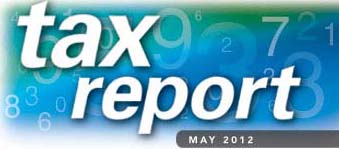Saving For Retirement When You're Self-Employed

You're in good company if retirement security is one of your main financial concerns. A difficult economy, market volatility, and less access to traditional pensions have heightened awareness of the need for retirement planning. As a self-employed individual, you really have to think carefully about your future, since you don't have an employer sponsored retirement plan to help you prepare.
But you do have options. Several tax favored retirement plans are available to self-employed individuals. All allow you to make tax-deductible contributions. And those contributions, along with investment earnings, grow tax deferred until you take withdrawals from the plan. Here are three options you may want to consider.
SEP Plan
A Simplified Employee Pension (SEP) plan is relatively easy and inexpensive to set up and administer. It allows you to contribute up to 25% of as much as $250,000 of compensation annually, subject to a maximum contribution limit of $50,000 per person for 2012. (There is a special computation for figuring your maximum deduction for contributions to your own SEP account.) Within these parameters, you have the discretion to determine how much money, if any, you want to contribute each year.
On the downside, a SEP is entirely employer-funded.If you have eligible employees, you must contribute the same percentage of compensation for them as you do for yourself or use another allocation formula that does not discriminate in favor of highly compensated employees. Also, since a SEP uses individual retirement accounts, loans are prohibited.
Solo (Individual) 401 (k)

A solo 401 (k) plan may be a suitable option if you work alone or employ only your spouse. For 2012, this plan allows you to defer the first $17,000 of your compensation (or $22,500 if you're age 50 or older). You also may make a profit-sharing contribution (subject to tax la\';' limits). The combination of all contributions - including deferrals, profit sharing, and any others - may not exceed the lesser of (I) 100% of your compensation or (2) $50,000 ($55,500 if you're age 50 or older). As with a SEP, contributions are discretionary.
If you foresee wanting to borrow from your account, a solo 401 (k) may be preferable to a SEP, since loans are allowed (within certain tax law limits). Another potential advantage is that a 401(k) plan can be set up to accept after-tax Roth contributions. Unlike with a standard 401(k), amounts in a Roth 401 (k) account may be withdrawn from the plan tax free once you've met specified conditions.
SIMPLE IRA
Like a SEP, a SIMPLE IRA plan is structured with IRAs for yourself and each participating employee. You and your employees can elect to defer compensation to the plan (no more than $11,500 in 2012; $14,000 if age 50 or older). An additional employer contribution is required annually. Employers can either: (1) match employee contributions up to 3% of pay (a lower 1 % match is allowed in certain years) or (2) contribute 2% of pay for each employee who's eligible to contribute, even if the employee chooses not to contribute.
This plan is designed to be simple to administer, but contribution limits are relatively low, and you must be prepared to commit to making annual employer contributions. Loans are not allowed. A SIMPLE IRA generally isn't an option if you have another retirement plan or more than 100 employees.

MAY
10 Employers: Deferred due date for Form 941, if timely deposits were made.
15 Exempt Organizations: File 2011 Form 990. 990-EZ. or 990-N. if the organization reports on a calendar year basis.
15 Partnerships and S Corporations: If an election to use a tax year other than a required tax year was made, file Form 8752 to report the required payment.
JUNE
15 Individuals: Second installment of 2012 estimated tax due. file Form 1040-ES.
15 Corporations: Deposit second installment of estimated income tax for 2012. if the organization reports on a calendar-year basis.
May 2012 Page 3


